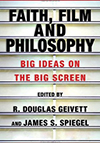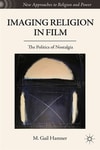- Author(s): Krzysztof Majer
- When: 2015-11
- Where: Text Matters
Before Joel and Ethan Coen’s 2009 production A Serious Man, Jewish motifs have consistently appeared in their cinematic output. However, the Jewish characters functioned in an ethnically diverse setting and rarely took centre stage, with the notable exception of the eponymous struggling leftist playwright in Barton Fink. Nevertheless, even here the Jewishness seemed to be universalized into “humanity.” Elsewhere, through their accessory characters, the Coens primarily offered a nod to the illustrious and/or notorious Jewish presence in various spheres of American society (e.g., smalltime gangster Bernie Bernbaum in Miller’s Crossing or movie mogul Jack Lipnick in the aforementioned Barton Fink). In addition, steadfast religious observance has been an object of affable ridicule (e.g., store owner Walter Sobchak in The Big Lebowski). A Serious Man, however, reveals an unprecedented strategy. Described by the Coens as their most autobiographical film to date, it has a predominantly Jewish cast, deals almost exclusively with a Jewish community in the Midwest, and is heavily steeped in themes which have long been the staple of the Jewish literary tradition. Most evident is the familiar figure of the schlemiel, the eternal loser, embodied in the protagonist Larry Gopnik, whose seemingly endless predicaments form the spine of the plot. Marketed as a comedy, A Serious Man nevertheless consistently exhibits a dark, existential undercurrent, which renders its decidedly grim ending a rather logical payoff. Drawing on the research of seminal scholars on the subject of schlemiel narratives (e.g., Ruth Wisse, Sanford Pinsker), the essay is an attempt to situate the film within this tradition. Furthermore, I argue that the Coens reinvest the figure of the schlemiel with a philosophical charge that it possessed in folk legends and Yiddish literature; at the same time, they adapt the schlemiel to the postmodern condition. This allows them to address the fundamental uncertainty of our age, signalled in the film through the formulae of Heisenberg and Schrödinger.








